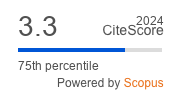Article | Open Access
Ripple Effects Mapping Within a Process Evaluation of Sport for Development Provision in England
| Views: | 1149 | | | Downloads: | 1069 |
Abstract: Evaluating the impact of sport for development is fraught with practical and methodological challenges. The evaluator is often presented with complex and messy social realities compounded by ill‐defined interventions with hard‐to‐follow outcomes. Further, those subject to an impact evaluation can feel under the spotlight with little contribution to the research programme, which complicates the potentially informative learning and developmental processes of the evaluation. This article provides an introduction to ripple effects mapping (REM) as an evaluation technique and draws on the case study of a community‐based, physical‐activity intervention within the UK. This article will demonstrate the utility of REM as a co‐productive technique for exploring programme outcomes but also as a tool to capture and understand the impact of the programme on participants. Through the presentation and analysis of the example REM, produced collaboratively with programme participants and stakeholders, the discussion illustrates the suitability and potential of REM as a process evaluation tool. The article presents REM in the context of evaluating sport for development practices and provides a critique and reflection about the refinement of REM as a robust evaluation tool.
Keywords: community engagement; evaluation; impact; participatory methods; physical activity; ripple effects mapping; sport for development
Published:
Issue:
Vol 13 (2025): Impact Evaluation of Community Sport Programmes and “Sport Social Work Practices”
© Jase Wilson, Dan Bates. This is an open access article distributed under the terms of the Creative Commons Attribution 4.0 license (http://creativecommons.org/licenses/by/4.0), which permits any use, distribution, and reproduction of the work without further permission provided the original author(s) and source are credited.


